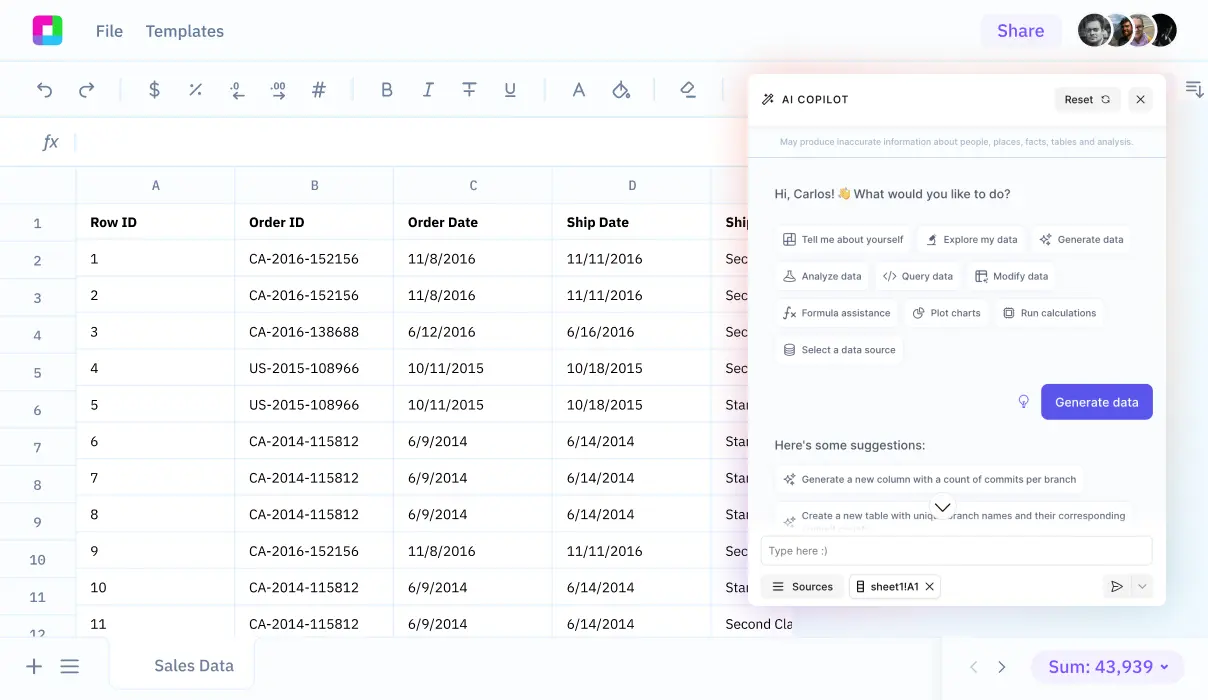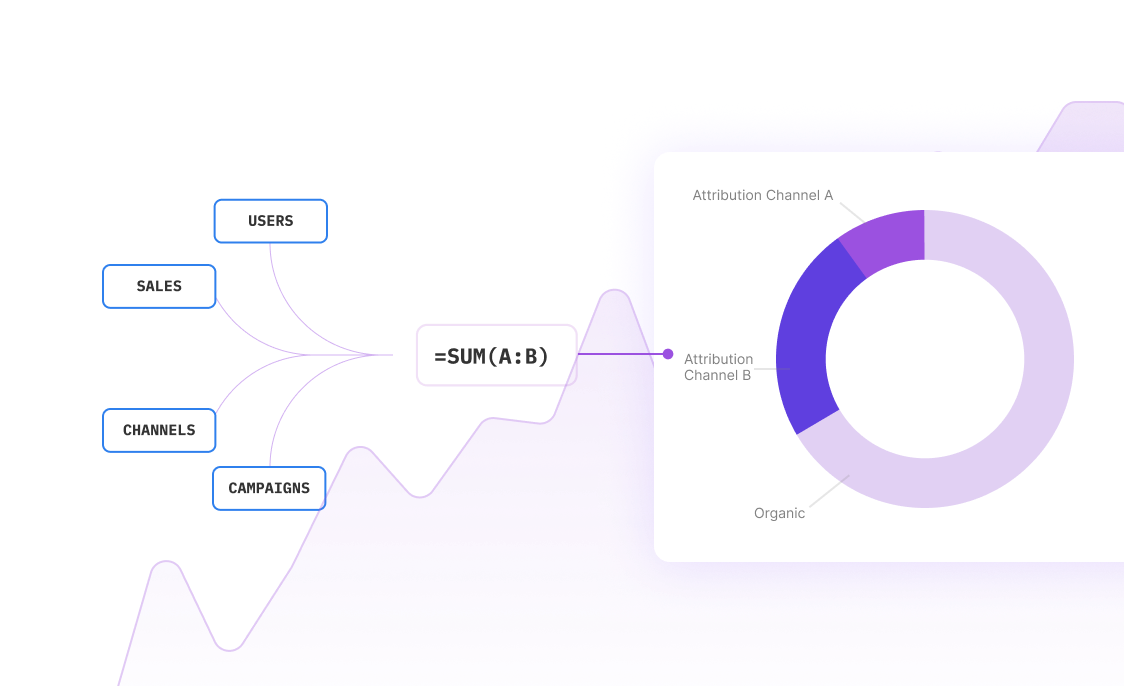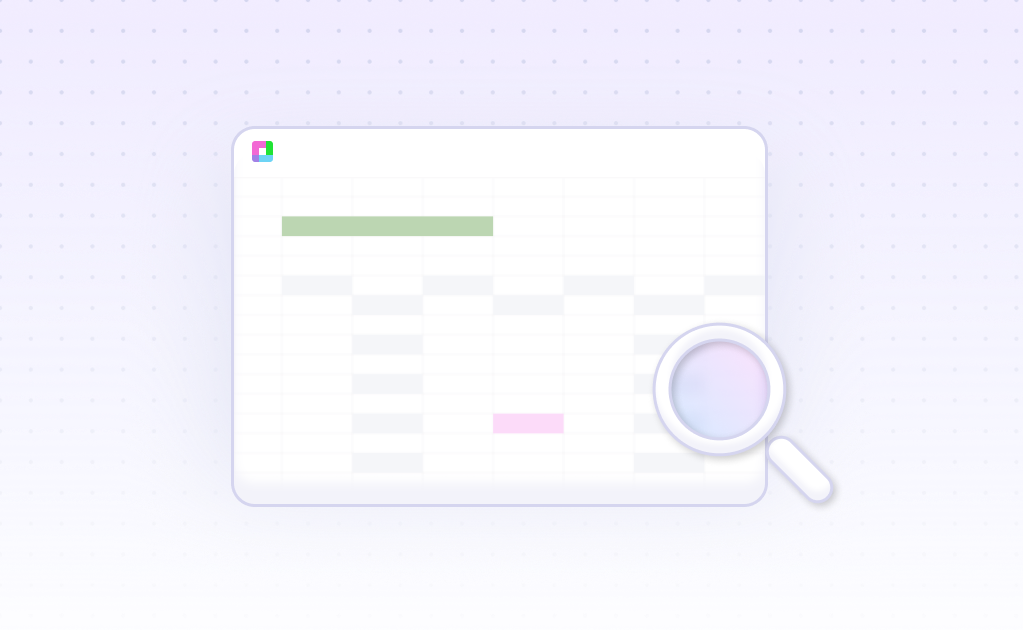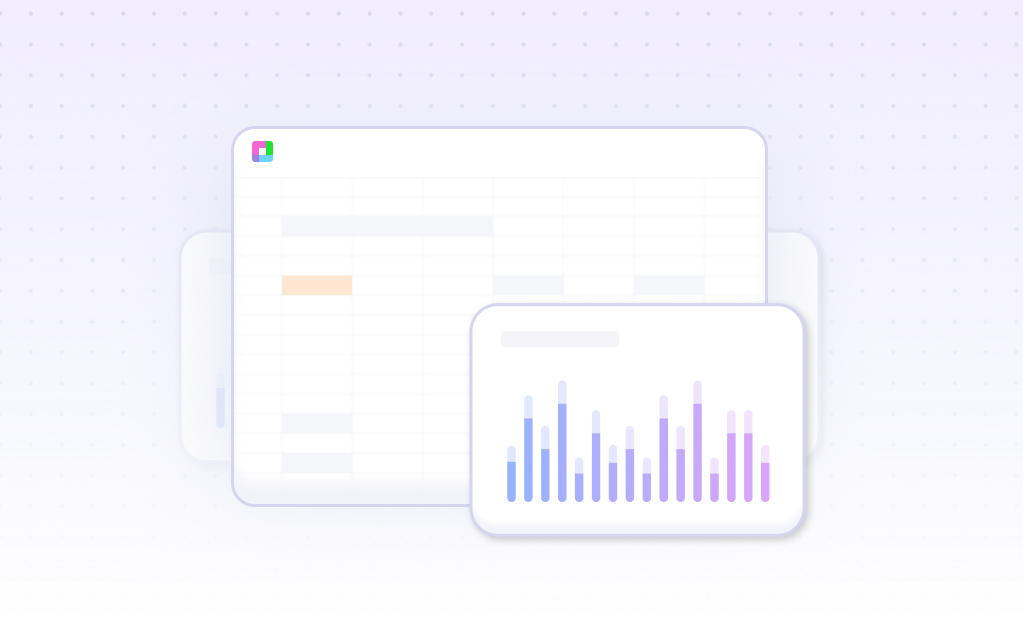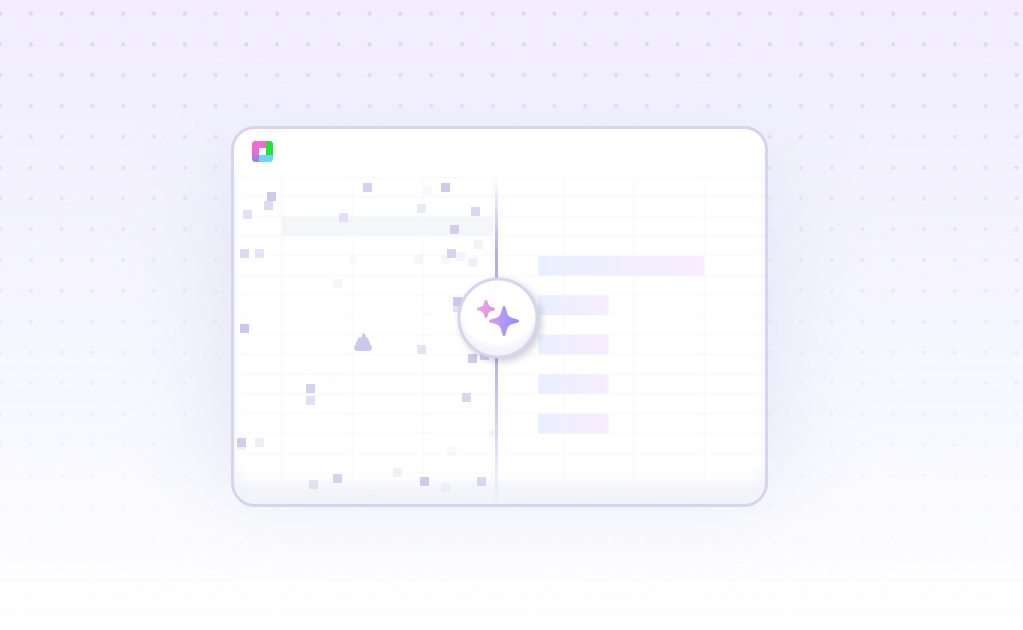
Introduction
Decomposition analysis helps identify trends, seasonality, and growth patterns in time series data. Traditional Excel methods use weighted moving averages, AVERAGEIF functions, and seasonal coefficients to break down data components. While Excel requires manual calculation of trend lines and monthly figures, Sourcetable offers an AI-powered alternative that streamlines the process.
Sourcetable's AI assistant responds to natural language commands and integrates with over 100 data sources, making decomposition analysis more accessible. The platform combines spreadsheet functionality with AI capabilities to accelerate formula creation, charting, and data summarization. Learn how to perform powerful decomposition analysis with Sourcetable's intuitive tools at sourcetable.com/signup.
Why Sourcetable Is Superior for Decomposition Analysis
While over a billion people use Excel, Sourcetable's AI-powered capabilities make it significantly faster for formulas, charting, and data analysis. Its live data integration ensures reports stay current automatically, eliminating manual updates common in Excel.
AI-Enhanced Efficiency
Sourcetable's AI algorithms automate complex calculations and data cleaning while minimizing human error. The platform identifies patterns and generates insights faster than traditional Excel analysis, allowing analysts to focus on value-added activities instead of repetitive tasks.
Streamlined Workflow
Sourcetable seamlessly integrates with Excel and Google Sheets while making spreadsheet functions easier to use. Its AI chatbot interface transforms natural language queries into precise analytical outputs, accelerating the decomposition analysis process.
Superior Data Visualization
The AI engine automatically generates comprehensive visualizations and validates data quality, improving analysis accuracy. This automated approach to charting and data validation surpasses Excel's manual visualization tools in both speed and reliability.
Benefits of Decomposition Analysis with AI-Powered Spreadsheets
Decomposition analysis breaks down indicators into different factors to understand underlying changes. This powerful technique analyzes energy consumption, emissions, material use, and trends across various sectors. Its flexibility and simplicity make it ideal for studying complex problems with multiple factors.
Why Choose Decomposition Analysis
Analysts can select from various decomposition techniques based on specific strengths and requirements. Perfect decomposition properties ensure accurate analysis of complex systems. The method's similarity to index number methods makes it accessible to researchers and analysts.
AI-Powered Spreadsheet Advantages
Modern AI spreadsheets automate tedious tasks and analyze large datasets effortlessly. Unlike traditional Excel pivot tables, AI can automatically categorize data, fill gaps, and generate predictive models. The technology identifies patterns and provides data-driven recommendations, streamlining the entire analysis process.
AI-powered spreadsheets enhance decomposition analysis through automated data processing, pattern recognition, and future value prediction. This combination delivers faster, more accurate results than traditional Excel-based methods while maintaining the structured approach of source data tables.
Time Series Decomposition Analysis with Sourcetable
Sourcetable, an AI-powered spreadsheet platform, combines advanced decomposition analysis capabilities with intuitive natural language processing. Users can perform sophisticated time series analysis through both traditional spreadsheet functions and AI-assisted features.
Traffic Pattern Analysis
Sourcetable's integrated chatbot assists with web traffic decomposition through weighted moving averages and seasonal coefficient calculations. The platform can automatically identify underlying growth trends and calculate seasonal patterns in traffic data using both built-in formulas and natural language commands.
Forecasting Capabilities
The platform supports comprehensive time series forecasting with customizable parameters for seasonality and confidence intervals. Users can leverage exponential smoothing techniques through natural language queries, while maintaining the ability to fine-tune predictions based on specific data characteristics.
Data Integration and Cleaning
Sourcetable connects with over 100 data sources, automatically cleaning and summarizing incoming data for decomposition analysis. Users can execute Python or SQL code for advanced decomposition calculations while utilizing the platform's AI-powered data preparation features.
Decomposition Analysis Use Cases with Sourcetable
Energy Efficiency Analysis |
Business executives and analysts can decompose changes in energy consumption over time. The AI-powered platform automates data entry and enhances insights into efficiency improvements versus production changes. |
Carbon Emissions Assessment |
Research scientists can analyze CO2 emissions using multiplicative or additive decomposition methods. Sourcetable's AI capabilities streamline the analysis of emissions by sector and improve data storytelling for stakeholders. |
Labor Cost Evaluation |
Financial analysts can decompose labor cost changes across different sectors. AI automation reduces time spent on complex calculations while enhancing decision-making for future workforce planning. |
Multi-Factor Analysis |
Data analysts can implement De Boer's approach to decompose value changes into multiple factors using Fisher indices. Sourcetable's AI features optimize the process of working with 3-6 factor tables for empirical applications. |
Frequently Asked Questions
What is decomposition analysis and what are its main types?
Decomposition analysis consists of two main types: Structural Decomposition Analysis (SDA) and Index Decomposition Analysis (IDA). Both methods attempt to identify drivers of changes in energy and environmental impacts by analyzing how those impacts relate to production and consumption. SDA is more comprehensive but requires more data than IDA.
What are the most commonly used decomposition methods and their characteristics?
The six widely used decomposition methods are Fisher, Montgomery, Sato-Vartia, Additive Sato-Vartia, Bennet, and Montgomery. Fisher is zero value and change-in-sign robust and satisfies proportionality. Montgomery-Vartia and Sato-Vartia are recommended for their ease of programming compared to Fisher, though they are not change-in-sign robust.
How can I perform decomposition analysis in Sourcetable?
In Sourcetable, you can perform time series decomposition using the STL algorithm. Use the STL_Trend, STL_Seasonal, and STL_Residual chart functions to create visualizations. For seasonal patterns over one-year cycles, set the period value to 12, with the seasonal component defined as one period of 12 months.
Conclusion
Decomposition analysis in Excel requires several key steps, including weighted moving averages, centered moving averages of order 12 for monthly figures, and using AVERAGEIF for monthly calculations. The process involves trend lines for growth rates and seasonal coefficients for future predictions.
Sourcetable, an AI-powered spreadsheet solution, streamlines this analysis process through natural language commands and intelligent suggestions. Its integration with over 100 data sources and ability to execute Python or SQL code makes decomposition analysis more accessible. For a faster, AI-driven approach to decomposition analysis, try Sourcetable at sourcetable.com/signup.
Recommended Analysis Guides
Connect your most-used data sources and tools to Sourcetable for seamless analysis.
Frequently Asked Questions
If you question is not covered here, you can contact our team.
Contact Us
